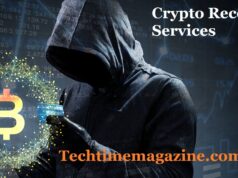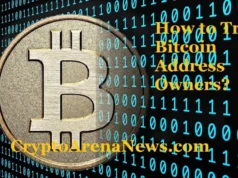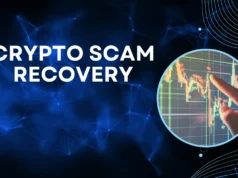Government and Public Services: Ensuring Transparency
Governments can leverage blockchain technology to enhance transparency and trust in public services. Blockchain-based voting systems can improve election integrity, while smart contracts can streamline administrative processes, reducing bureaucracy and increasing efficiency in delivering public services.
In this article, we delve into the realm of blockchain’s transformative potential in the art industry, specifically in relation to protecting ownership rights and intellectual property.
Blockchain Technology
In today’s fast-moving and ever-changing world, governments are constantly striving to find innovative solutions that promote transparency and trust in public services. One such solution with great potential is blockchain technology. By harnessing the power of blockchain, governments can revolutionize the delivery of public services, promote transparency, and increase citizen trust.
Applications:
An important application of blockchain technology in the area of public services is the implementation of blockchain-based voting systems. Traditional voting methods often face challenges such as voter fraud, manipulation, and a lack of transparency. However, by adopting blockchain for voting, governments can address these issues and ensure the integrity of the voting process. blockchain-based voting systems operate on a decentralized network where each vote is recorded in a transparent and immutable ledger.
This ensures that your vote, once it has been cast, can no longer be changed or manipulated. Each transaction is verified by numerous network participants, eliminating the need for intermediaries and reducing the risk of manipulation. Citizens can gain more confidence in the voting process, knowing their votes are being accurately reflected.
Furthermore, the transparency provided by blockchain technology extends beyond voting. Governments can utilize smart contracts, which are self-executing agreements with predefined conditions, to streamline administrative processes and enhance the delivery of public services. These contracts can automate tasks, reducing bureaucracy and eliminating the potential for human error or corruption.
Smart Contracts:
For example, consider a government agency responsible for issuing permits or licenses. By implementing smart contracts on a blockchain, the process can be automated, ensuring that all necessary criteria are met before a permit or license is granted. This not only saves time and resources but also minimizes the chances of favoritism or corruption since the criteria are predefined and transparently enforced.
Moreover, blockchain technology can facilitate the secure and transparent management of public funds. Government budgets and expenditures can be recorded on a blockchain, providing citizens with real-time visibility into how their tax dollars are being utilized. This transparency helps build trust between the government and the public, fostering a sense of accountability and allowing citizens to actively participate in the decision-making process.
Education and Credentials: Verifying Authenticity
Blockchain technology offers a secure and decentralized solution for verifying educational credentials. By storing academic records on the blockchain, individuals can easily authenticate their qualifications, reducing the risk of fraud and improving the hiring process.
In today’s increasingly digital world, the importance of verifying the authenticity of educational credentials cannot be overstated. As the demand for a qualified workforce grows, employers and academic institutions alike are seeking efficient and reliable methods to ensure the validity of academic qualifications. This is where blockchain technology steps in, providing a secure and decentralized solution that holds immense potential in revolutionizing the way we verify educational credentials.
Ledger Technology:
Blockchain, most commonly associated with cryptocurrencies like Bitcoin, is a distributed ledger technology that enables transparent and tamper-proof record-keeping. It operates as a decentralized system, where information is stored across a network of computers rather than in a central authority’s database. This decentralized nature of blockchain technology makes it highly resistant to manipulation, fraud, and unauthorized access.

Academic Institutions:
By leveraging the power of blockchain, academic institutions can securely store educational records on the distributed ledger. This process involves creating a digital representation of credentials, such as degrees, certifications, and diplomas, and assigning them a unique cryptographic identifier. These digital records are then stored in blocks that are linked together in a chain, forming an immutable and transparent record of educational achievements.
Educational Credentials:
When an individual needs to verify their educational credentials, they can provide the unique identifier associated with their qualifications. This identifier acts as a digital key that unlocks the corresponding blockchain record. Employers, educational institutions, or any other relevant parties can then independently verify the authenticity of the qualifications by accessing the blockchain and confirming the information stored within the blocks. This process eliminates the need for relying on potentially vulnerable and centralized databases, reducing the risk of fraud or misrepresentation.
Moreover, the use of blockchain technology in verifying educational credentials offers numerous benefits. Firstly, it increases trust and transparency in the hiring process. Employers can have confidence in the validity of a candidate’s qualifications, making recruitment more efficient and effective. It also saves time and resources by eliminating the need for manual verification processes, such as contacting academic institutions or third-party verification services.
Educational Records:
Additionally, blockchain technology provides individuals with greater control over their own educational records. They can easily share their credentials with prospective employers or educational institutions, streamlining application processes and reducing administrative burdens. Furthermore, blockchain-based systems can enhance privacy by allowing individuals to share only the necessary information required for verification, without revealing any sensitive personal details.
While blockchain technology holds great promise for revolutionizing the verification of educational credentials, its widespread adoption still faces challenges. Ensuring interoperability between different blockchain platforms and developing universally recognized standards for storing and verifying credentials are crucial steps toward realizing their full potential. Moreover, addressing concerns related to data privacy, security, and regulatory compliance will be vital in building trust among stakeholders.
Art and Intellectual Property: Protecting Ownership Rights
The art industry faces challenges with provenance and intellectual property rights. Blockchain provides a transparent and immutable ledger to record ownership, provenance, and copyright information, ensuring artists’ rights are protected and facilitating fair transactions in the art market.
The world of art has always been a captivating realm where creativity flourishes and imaginations take form. However, this industry has long struggled with issues concerning the provenance of artworks and the protection of intellectual property rights. In recent years, the emergence of blockchain technology has presented a promising solution to these challenges.
By harnessing the power of this innovative technology, the art world can now ensure the preservation of ownership records, trace the origin of artworks, and safeguard artists’ rights in an unprecedented manner.
















